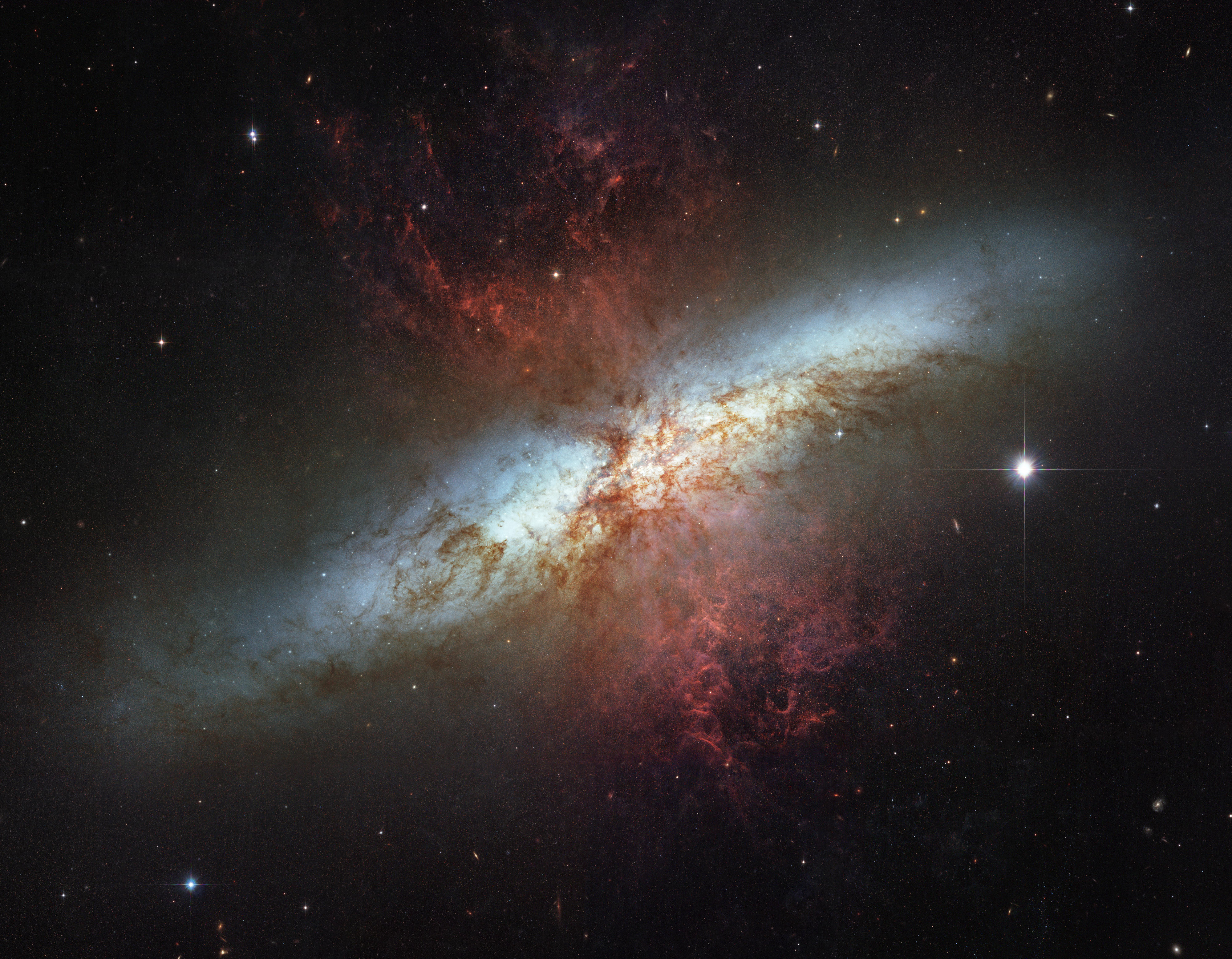Dead star lights up a nearby galaxy with a gamma-ray burst
Embargoed until:
Publicly released:
2024-04-25 01:00
A gamma-ray burst from a type of neutron star called a magentar has been detected by international researchers, observing the relatively close-by galaxy known as M82. Magnetar gamma-ray bursts are rare explosive events and the latest discovery may provide insights into the frequency of such events. Giant flares such as this gamma-ray burst are short explosive events releasing extremely large amounts of energy. Only three such flares have been seen from magnetars in our Galaxy and the nearby Large Magellanic Cloud in around 50 years. Observations of giant flares from magnetars further afield are impeded by the fact that the source of energetic bursts can be difficult to determine at long distances.
Journal/conference: Nature
Link to research (DOI): 10.1038/s41586-024-07285-4
Organisation/s: INAF - Istituto di Astrofisica Spaziale e Fisica Cosmica di Milano, Italy
Funder: This work received financial support from INAF through the Magnetars Large Program Grant
(Principal Investigator S.M.) and from the GRAWITA Large Program Grant (Principal Investigator
P.D.A.). J.C.R., A.B., S.M. and P.U. acknowledge financial support from ASI under contract no.
2019-35-HH.0. F.O. acknowledges support from MIUR, PRIN 2020 (grant no. 2020KB33TP)
‘Multimessenger astronomy in the Einstein Telescope Era’ (METE). J.C.R. acknowledges support
from the European Union’s Horizon 2020 Programme under the AHEAD2020 project (grant
agreement no. 871158). P.D.A. and S.C. acknowledge funding from the Italian Space Agency,
contract ASI/INAF no. I/004/11/4.
Media release
From: Springer Nature
Astrophysics: A rare giant flare from a magnetar *IMAGES*
Observations of a giant flare from a magnetar (a strongly magnetized neutron star) in the nearby galaxy M82 are reported in Nature this week. Magnetar giant flares are rare explosive events and the latest discovery, based on the analysis of a purported gamma ray burst (GRB), may provide insights into the frequency of such events.
Giant flares are short explosive events releasing extremely large amounts of energy as GRBs. Only three such flares have been seen from magnetars in our Galaxy and the nearby Large Magellanic Cloud in around 50 years. Observations of giant flares from magnetars further afield are impeded by the fact that the source of energetic bursts can be difficult to determine at long distances.
Sandro Mereghetti and colleagues report observations made by sensitive instruments onboard the INTEGRAL satellite of a burst named GRB 231115A from the centre of M82, a starburst galaxy (undergoing rapid star formation) around 12 million light years away. The authors suggest that its spectral and timing properties, together with X-ray and optical observations a few hours after the event and the lack of a gravitational wave signal, indicate that this burst was the result of a giant flare from a magnetar. They conclude that starburst galaxies such as M82, known to produce magnetars, may be promising targets for studying giant flares.


